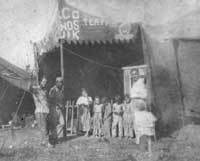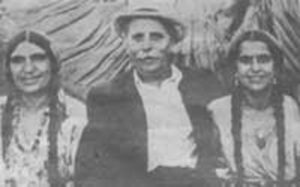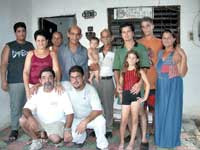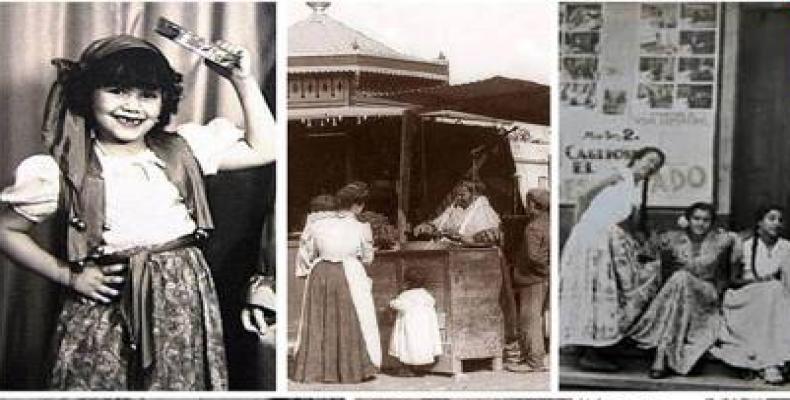 LAS INFLUENCIA GITANAS EN CUBA COMO PARTE DE LA FORMACION DE NUESTRA NACIONALIDAD.
LAS INFLUENCIA GITANAS EN CUBA COMO PARTE DE LA FORMACION DE NUESTRA NACIONALIDAD.
La Presencia de los gitanos en Cuba se remonta a los tiempos de la Colonia, aunque fué mas abundante cuando los encontramos llegando a Cuba a raíz de la II Guerra Mundial, cuando los nazis exterminaron en los campos de concentración a medio millón de seres, pertenecientes a esa etnia, en Europa Central.
En Cuba han dejado la huella de muchas de sus costumbres. Difundieron las ferias, los carnavales y el circo ambulante, del que llegaron a existir 42. Hay palabras de su lengua incorporadas a la jerga de los compositores del feeling de la década de 1940 y de la actual música bailable salsera… y hasta en los dulces: el brazo gitano. Su música, además, influyó mucho en la andaluza y por ende en la criolla, heredera de ritmos y bailes españoles.
Referencias del tema en nuestra literatura, en libros como “Memorias de una cubanita que nació con el siglo”, de la escritora Renée Méndez Capote, les dedica un espacio. La prensa de la época también reseñó sus refugios en los arrabales de La Habana de intramuros, en tanto los habitantes de la ciudad recibieron con cierta curiosidad a aquellos tocadores de guitarra española y sus bellas mujeres ataviadas con vestidos típicos.
Aunque por su condición de nómadas se podían encontrar en cualquier lugar de la isla participando como artistas en el circo, como vendedores en ferias y parrandas, o improvisando chinchales y timbiriches para la venta de mercancías elaboradas incluso por ellos mismos, existen referencias documentadas que los ubican, en otros tiempos, en algunos centrales azucareros como el Chaparra y otras regiones del oriente cubano. También en la provincia de Las Villas era frecuente ver sus campamentos, como por ejemplo, a las afueras de Camajuaní.
Sin embargo, donde mayor se hizo notar la influencia gitana fue en el habla popular. La lengua caló ha hecho de las suyas, y en el habla marginal sobran los vocablos con significados muy similares a las utilizadas a diario en esta jerga.
Como ejemplo de ello, a continuación relacionamos los siguientes: acurdar (emborrachar) , andoba (fulano), barín (bueno), berro (cólera, disgusto), birlar (robar), bisnar (vender), de buten (de maravilla, de primera), chiva (soplón, delator), chola (cabeza), chota (soplón), chusma (muchedumbre vulgar), coba (halago, adulación), cúmbila (compañero, amigo), curda (embriaguez, borrachera), furnia (cueva), garito (casa de juego), guillarse (hacerse pasar por algo distinto de lo que se es, hacerse el tonto), jamar (comer), jarana (broma), jeta (cara), jiña (excremento), jiñar (defecar), jiribilla (salero, gracia), mangar (engañar), menda (yo), pargo (homosexual), pirabear (fornicar), pirar (marcharse, irse), puro,ra (padre, madre), sandunga (donaire, garbo), sornar (dormir)…
En la actualidad existe en Camagüey la “Agrupación Flamenca Sangre Gitana” integrada por unas 130 niñas y adolescentes de dicha ciudad y dirigidas por su fundadora, Yaineris Torres Pérez, que desarrolla una interesante labor con amorosa pasión por ese tipo de expresión cultural. Y todavía conservan algunas de sus tradiciones. El pan hecho de huevo, el té sin falta en cada casa, las fotos, el respeto por la palabra de los mayores, la estabilidad del matrimonio, la alegría en cada cosa, el gusto por los colores vivos, los grandes aretes y hasta por las prendas de oro, son algunos de los rasgos que los caracterizan.
En el siglo pasado el etnólogo cubano Fernando Ortiz expresó con cierta razón que Cuba era un ajiaco por la diversidad de razas y culturas que influyeron en la formación de su nacionalidad.
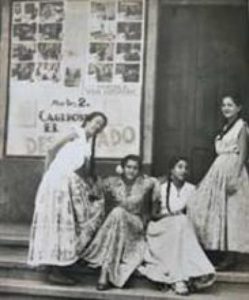 THE GYPSY INFLUENCE IN CUBA AS PART OF THE FORMATION OF OUR NATIONALITY.
THE GYPSY INFLUENCE IN CUBA AS PART OF THE FORMATION OF OUR NATIONALITY.
The Presence of the gypsies in Cuba goes back to the times of the Colony, although it was more abundant when those we found arriving in Cuba in the wake of World War II, when the Nazis exterminated half a million beings in the concentration camps, belonging to that ethnic group, in Central Europe.
In Cuba, they left the mark of many of their customs. They spread the fairs, the carnivals, and the traveling circus, of which 42 came into existence. There are words of their language incorporated into the slang of the composers of the feeling of the 1940s and of the current salsa dance music … and even in the candy: the gypsy arm. His music, in addition, greatly influenced the Andalusian and therefore the Creole, heiress of Spanish rhythms and dances.
References of the subject in our literature, in books such as “Memories of a Cuban born with the century”, by the writer Renée Méndez Capote, dedicate a space to them. The press of the time also reviewed their shelters in the suburbs of Havana in intramuros, while the inhabitants of the city received some curiosity about those Spanish guitar players and their beautiful women dressed in typical dresses.
Although due to their status as nomads they could be found anywhere on the island participating as artists in the circus, as sellers at fairs and parrandas, or improvising chinchales and timbiriches for the sale of goods made even by themselves, there are documented references that located, in other times, in some sugar plants such as Chaparra and other regions of eastern Cuba. Also in the province of Las Villas it was common to see their camps, such as, on the outskirts of Camajuaní.
However, where the gypsy influence was most noticeable was in popular speech. The Caló language has made its own, and in the marginal speech, there are plenty of words with very similar meanings to those used daily in this jargon.
As an example, here are the following: acurdar (emborrachar) , andoba (fulano), barín (bueno), berro (cólera, disgusto), birlar (robar), bisnar (vender), de buten (de maravilla, de primera), chiva (soplón, delator), chola (cabeza), chota (soplón), chusma (muchedumbre vulgar), coba (halago, adulación), cúmbila (compañero, amigo), curda (embriaguez, borrachera), furnia (cueva), garito (casa de juego), guillarse (hacerse pasar por algo distinto de lo que se es, hacerse el tonto), jamar (comer), jarana (broma), jeta (cara), jiña (excremento), jiñar (defecar), jiribilla (salero, gracia), mangar (engañar), menda (yo), pargo (homosexual), pirabear (fornicar), pirar (marcharse, irse), puro,ra (padre, madre), sandunga (donaire, garbo), sornar (dormir)…
At present, there is in Camagüey the “Flamenco Grouping Blood Gypsy” composed of about 130 girls and adolescents from that city and directed by its founder, Yaineris Torres Pérez, who develops an interesting work with a loving passion for that type of cultural expression. And they still retain some of their traditions. The bread made of egg, the tea without fail in each house, the photos, the respect for the word of the elders, the stability of the marriage, the joy in each thing, the taste for the bright colors, the great earrings and even for gold garments are some of the features that characterize them.
In the last century the Cuban ethnologist Fernando Ortiz expressed some reason that Cuba was an ajiaco because of the diversity of races and cultures that influenced the formation of its nationality.
Agencies/ RHC/ Guadalupe Yaujar/ Nostalgias Cubanas/ Derubín Jacome/ Internet Photos/ Arnoldo Varona/ www.TheCubanHistory.com
THE CUBAN HISTORY, HOLLYWOOD.








